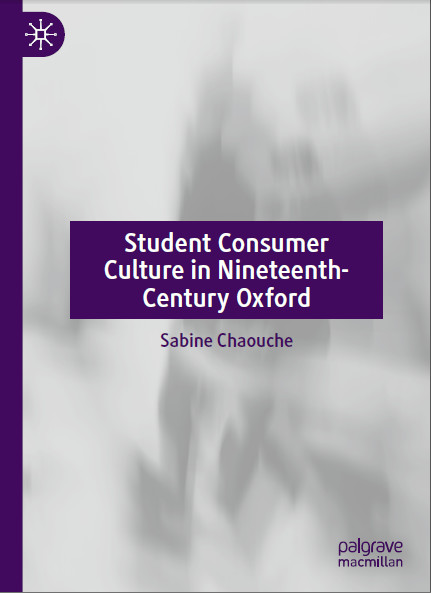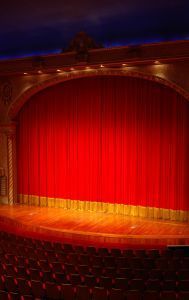
Front Matter
Pages i-xv
Introduction
Sabine Chaouche
Pages 1-33
This book explores students’ consumer practices and material desires in nineteenth-century Oxford. Consumerism surged among undergraduates in the 1830s and decreased by contrast from the 1860s as students learned to practice restraint and make wiser choices, putting a brake on past excessive consumption habits. This study concentrates on the minority of debtors, the daily lives of undergraduates, and their social and economic environment. It scrutinises the variety of goods that were on offer, paying special attention to their social and symbolic uses and meanings. Through emulation and self-display, the habits of undergraduate students impacted the formation of male identities and spending habits. Using Oxford students as a case study, this book opens new pathways in the history of consumption and capitalism, revealing how youth consumer culture intertwined with the rise of competition among tradesmen and university reforms in the 1850s and 1860s.
College Life and the Local Economy
Sabine Chaouche
Pages 35-62
This chapter contextualises the undergraduate world and is concerned with the costs of an education at the university. It illuminates the connections between student consumption, university reforms and the development of trade. It claims that whereas discipline was demanded and abstemious life promulgated by the university’s philosophy and rules, students’ college and urban life inhibited thrift. The development of lodging houses that correlated with the expanding student body liberated a large number of undergraduates from the regulations of living in college. Moreover, the proliferation of shops over the century and the prominence of local networks made of Oxford an emporium, students being surrounded by fancy commodities. In this sense, Oxford’s provincial retail environment was a strong incentive for students to consume goods.
Male Consumption and Students’ Tastes
Sabine Chaouche
Pages 63-91
Young men were active consumers, using the world of goods to create a specific self and present it in everyday life. The range of goods purchased or services required by particular groups representing masculinities and youthful tastes, as well as the forms and modes of their consumption, is explored here. The advent of a consumer society impacted on young men’s imaginary of masculinity; the consumption of new goods, in turn, defined masculinity during the period. This chapter, therefore, assesses the extent to which, and how, male identities were constructed through goods. It scrutinises the delineation between manly and androgynous consumption—nuancing the concept of ‘gendered consumption’.
Undergraduate Culture and Male Consumer Behaviour
Sabine Chaouche
Pages 93-127
Undergraduates were regularly associated with the so-called ‘fast man’ whose consumption habits became uncontrollable and transformed into consumerist behaviour. For most students, being at Oxford meant learning to socialise and jockey for position. In many cases they showed off their wealth. Moreover, student expenses were often correlated with conspicuous consumption as spending and acquisition were means to establishing status. College life and social habits demarcated the different interconnected networks, and interdependent behaviour and practices which shaped student consumption. The impact of undergraduate culture on students’ motivations to consume is highlighted in this chapter which explains why students bought specific goods to position themselves in the undergraduate class hierarchy, and how these goods were used to display or perform status. It therefore helps to understand how consumerist and materialistic mentalities could interweave with the character and persona of the students tempted to become ‘fast men’.
The Formation of Spending Habits
Sabine Chaouche
Pages 129-158
This chapter examines how tradesmen influenced students’ decision-making, by putting in place targeted marketing strategies, flexible payment terms, aggressive sales techniques and specific services to attract freshmen. It shows how undergraduates got into financial difficulties. The Jennings case represents the epitome of a phenomenon which was partly linked to commercial rivalries and which led tradesmen to respond to the bad publicity their practices received. Colleges refrained from interfering in the consuming process. The case is explored as an illustration of the perception of student consumption in comparison with the reality of the act of buying, the mode of purchase, the nature of the goods, and the accumulation of debts.
Consumer Credit Traps and Student Consumerism
Sabine Chaouche
Pages 159-196
This chapter analyses the development of market relationships and the methods of payment offered by tradesmen to undergraduate customers. In nineteenth-century Oxford, long-term credit, much preferred by merchants, played a major role in the local economy. Purchasing facilities impacted on demand encouraging excesses in consumption. They were used as a facility by students and, as a result, accelerated insolvency. The chapter also surveys the attitude of the university authorities to methods of payment, which generally was a laissez-faire policy.
Excessive Consumption and Insolvency
Sabine Chaouche
Pages 197-244
This chapter scrutinises insolvent student debtors, using records from the Chancellor’s Court and explores the mechanisms put in place to regulate the consumption level of Oxford students. Young men with outstanding bills were frequently sued by tradesmen before they graduated. The extent of debt and its distribution within the undergraduate body, by college, class and father’s occupation, and across categories of consumption goods are assessed. A comparison between the 1830s and 1870s reveals both continuities and changes in consumption patterns. The effects of debt on both debtors and tradesmen are also explored. Legal proceedings highlight the relationship between buyer and seller which underpinned consumption and overspending. Prosecutions suggest that determining whether goods sold to ‘infants’ were necessaries or not became a major issue in excessive consumption cases.
An Emerging Anti-Consumerist Culture?
Sabine Chaouche
Pages 245-269
This chapter focuses on some students’ new strategies to avoid waste and unnecessary expenses. It analyses, in particular, Oxford students’ relationship with consumption and spending in the second part of the century. From the 1860s, undergraduates who felt ‘treated [like] pigeons’ became more suspicious of education costs and college economy, and therefore began to scrutinise their fees, battels, as well as bills from suppliers. As a result, they petitioned against abuses in colleges and tried to have a more rational approach to expenditure. The ‘Bread and Butter’ battle symbolises new student behaviour, in sharp contrast to the image of the ‘fast man’ during a period which emphatically and almost systematically portrayed these young men as profligate and self-indulgent. Students’ actions and reflections as consumers, in particular, how they fought against waste and mechanisms driving consumption, are discussed. The chapter concludes that far from being indifferent to excessive spending, many students in the 1860s refrained themselves and made wiser choices, putting a brake on past consumerist habits.
Conclusion
Sabine Chaouche
Pages 271-279
The conclusion shows how the historical enquiry reconstructed and assessed students’ purchases in nineteenth-century Oxford, describing the origins, evolution and meanings of consumption and its material and immaterial aspects. Consumption practices and motivations evolved significantly when the student body and the provincial retailing market expanded both simultaneously from the mid-century onwards. As soon as they settled in their rooms, undergraduates had to engage with consumer culture and consumer practices, being involved in college life and rituals, and approached by tradesmen. During their time at Oxford, they constantly made decisions on how to consume, on which scale and at which level. Along the way they made mistakes: buying imprudently, overspending, getting in debt or simply purchasing goods they neither liked nor needed. From these some learned lessons. Becoming customers therefore helped students emancipate, both socially and individually.
Back Matter
Pages 281-318
Springer website:
Pages i-xv
Introduction
Sabine Chaouche
Pages 1-33
This book explores students’ consumer practices and material desires in nineteenth-century Oxford. Consumerism surged among undergraduates in the 1830s and decreased by contrast from the 1860s as students learned to practice restraint and make wiser choices, putting a brake on past excessive consumption habits. This study concentrates on the minority of debtors, the daily lives of undergraduates, and their social and economic environment. It scrutinises the variety of goods that were on offer, paying special attention to their social and symbolic uses and meanings. Through emulation and self-display, the habits of undergraduate students impacted the formation of male identities and spending habits. Using Oxford students as a case study, this book opens new pathways in the history of consumption and capitalism, revealing how youth consumer culture intertwined with the rise of competition among tradesmen and university reforms in the 1850s and 1860s.
College Life and the Local Economy
Sabine Chaouche
Pages 35-62
This chapter contextualises the undergraduate world and is concerned with the costs of an education at the university. It illuminates the connections between student consumption, university reforms and the development of trade. It claims that whereas discipline was demanded and abstemious life promulgated by the university’s philosophy and rules, students’ college and urban life inhibited thrift. The development of lodging houses that correlated with the expanding student body liberated a large number of undergraduates from the regulations of living in college. Moreover, the proliferation of shops over the century and the prominence of local networks made of Oxford an emporium, students being surrounded by fancy commodities. In this sense, Oxford’s provincial retail environment was a strong incentive for students to consume goods.
Male Consumption and Students’ Tastes
Sabine Chaouche
Pages 63-91
Young men were active consumers, using the world of goods to create a specific self and present it in everyday life. The range of goods purchased or services required by particular groups representing masculinities and youthful tastes, as well as the forms and modes of their consumption, is explored here. The advent of a consumer society impacted on young men’s imaginary of masculinity; the consumption of new goods, in turn, defined masculinity during the period. This chapter, therefore, assesses the extent to which, and how, male identities were constructed through goods. It scrutinises the delineation between manly and androgynous consumption—nuancing the concept of ‘gendered consumption’.
Undergraduate Culture and Male Consumer Behaviour
Sabine Chaouche
Pages 93-127
Undergraduates were regularly associated with the so-called ‘fast man’ whose consumption habits became uncontrollable and transformed into consumerist behaviour. For most students, being at Oxford meant learning to socialise and jockey for position. In many cases they showed off their wealth. Moreover, student expenses were often correlated with conspicuous consumption as spending and acquisition were means to establishing status. College life and social habits demarcated the different interconnected networks, and interdependent behaviour and practices which shaped student consumption. The impact of undergraduate culture on students’ motivations to consume is highlighted in this chapter which explains why students bought specific goods to position themselves in the undergraduate class hierarchy, and how these goods were used to display or perform status. It therefore helps to understand how consumerist and materialistic mentalities could interweave with the character and persona of the students tempted to become ‘fast men’.
The Formation of Spending Habits
Sabine Chaouche
Pages 129-158
This chapter examines how tradesmen influenced students’ decision-making, by putting in place targeted marketing strategies, flexible payment terms, aggressive sales techniques and specific services to attract freshmen. It shows how undergraduates got into financial difficulties. The Jennings case represents the epitome of a phenomenon which was partly linked to commercial rivalries and which led tradesmen to respond to the bad publicity their practices received. Colleges refrained from interfering in the consuming process. The case is explored as an illustration of the perception of student consumption in comparison with the reality of the act of buying, the mode of purchase, the nature of the goods, and the accumulation of debts.
Consumer Credit Traps and Student Consumerism
Sabine Chaouche
Pages 159-196
This chapter analyses the development of market relationships and the methods of payment offered by tradesmen to undergraduate customers. In nineteenth-century Oxford, long-term credit, much preferred by merchants, played a major role in the local economy. Purchasing facilities impacted on demand encouraging excesses in consumption. They were used as a facility by students and, as a result, accelerated insolvency. The chapter also surveys the attitude of the university authorities to methods of payment, which generally was a laissez-faire policy.
Excessive Consumption and Insolvency
Sabine Chaouche
Pages 197-244
This chapter scrutinises insolvent student debtors, using records from the Chancellor’s Court and explores the mechanisms put in place to regulate the consumption level of Oxford students. Young men with outstanding bills were frequently sued by tradesmen before they graduated. The extent of debt and its distribution within the undergraduate body, by college, class and father’s occupation, and across categories of consumption goods are assessed. A comparison between the 1830s and 1870s reveals both continuities and changes in consumption patterns. The effects of debt on both debtors and tradesmen are also explored. Legal proceedings highlight the relationship between buyer and seller which underpinned consumption and overspending. Prosecutions suggest that determining whether goods sold to ‘infants’ were necessaries or not became a major issue in excessive consumption cases.
An Emerging Anti-Consumerist Culture?
Sabine Chaouche
Pages 245-269
This chapter focuses on some students’ new strategies to avoid waste and unnecessary expenses. It analyses, in particular, Oxford students’ relationship with consumption and spending in the second part of the century. From the 1860s, undergraduates who felt ‘treated [like] pigeons’ became more suspicious of education costs and college economy, and therefore began to scrutinise their fees, battels, as well as bills from suppliers. As a result, they petitioned against abuses in colleges and tried to have a more rational approach to expenditure. The ‘Bread and Butter’ battle symbolises new student behaviour, in sharp contrast to the image of the ‘fast man’ during a period which emphatically and almost systematically portrayed these young men as profligate and self-indulgent. Students’ actions and reflections as consumers, in particular, how they fought against waste and mechanisms driving consumption, are discussed. The chapter concludes that far from being indifferent to excessive spending, many students in the 1860s refrained themselves and made wiser choices, putting a brake on past consumerist habits.
Conclusion
Sabine Chaouche
Pages 271-279
The conclusion shows how the historical enquiry reconstructed and assessed students’ purchases in nineteenth-century Oxford, describing the origins, evolution and meanings of consumption and its material and immaterial aspects. Consumption practices and motivations evolved significantly when the student body and the provincial retailing market expanded both simultaneously from the mid-century onwards. As soon as they settled in their rooms, undergraduates had to engage with consumer culture and consumer practices, being involved in college life and rituals, and approached by tradesmen. During their time at Oxford, they constantly made decisions on how to consume, on which scale and at which level. Along the way they made mistakes: buying imprudently, overspending, getting in debt or simply purchasing goods they neither liked nor needed. From these some learned lessons. Becoming customers therefore helped students emancipate, both socially and individually.
Back Matter
Pages 281-318
Springer website:





